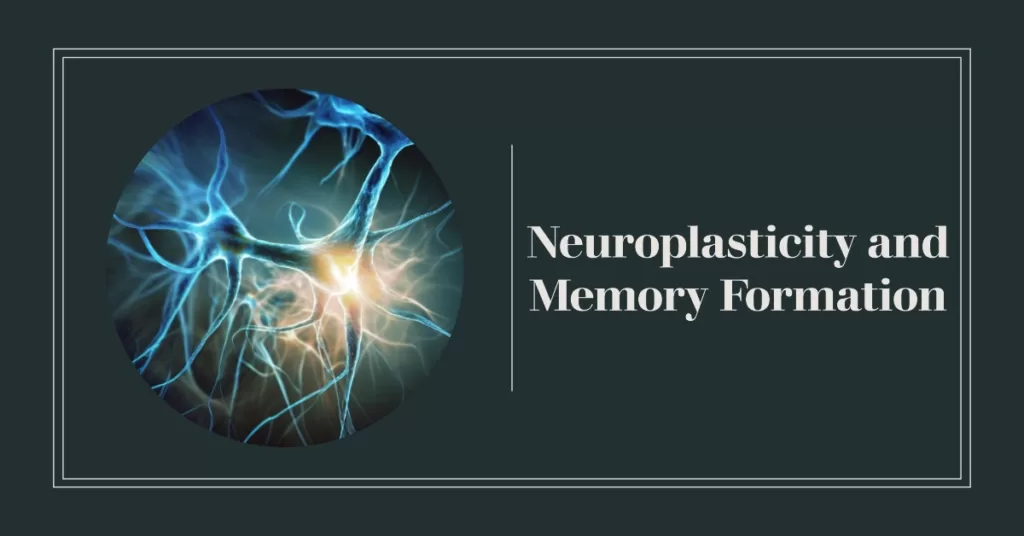Mental conditioning is a process of developing or altering a behavior or thought pattern in order to achieve a desired outcome. This process involves the manipulation of neural pathways in the brain and is often facilitated through memory formation. Neuroplasticity, which refers to the ability of neurons to form new connections, plays an important role in this process by allowing for changes to be made more quickly and efficiently. This article will explore how mental conditioning works, what its benefits are, and how it can be used as a tool for personal development. Additionally, it will discuss some of the challenges associated with mental conditioning and provide techniques that can be used to monitor progress. Through this examination of neuroplasticity and memory formation, readers can gain an understanding of the science behind mental conditioning.
Table of Contents
- 1 Definition of Mental Conditioning
- 2 Neuroplasticity and Memory Formation
- 3 The Benefits of Mental Conditioning
- 4 The Impact of Mental Conditioning on the Brain
- 5 The Role of Emotions in Mental Conditioning
- 6 Techniques for Mental Conditioning
- 7 Challenges of Mental Conditioning
- 8 Monitoring Your Progress
- 9 End Notes
Definition of Mental Conditioning
Mental Conditioning is defined as the process of altering an individual’s behavior and attitude through repeated experience aka training. It involves changing or reinforcing existing patterns of behavior by influencing conscious and unconscious thought processes. This type of conditioning can be applied to a variety of situations, such as developing a new skill or breaking old habits. It can also involve teaching someone how to respond to certain stimuli in order to achieve a desired outcome. The most effective mental conditioning techniques rely on positive reinforcement, repetition, and consistency.
The benefits of mental conditioning are twofold: it helps individuals become more self-aware and better equipped to handle difficult situations; it also teaches them how to develop healthier attitudes toward their own mental health and wellbeing. On an emotional level, mental conditioning can help individuals learn how to identify their own triggers for stress or anxiety and gain control over their thoughts and feelings when faced with challenging experiences. When this is practiced consistently over time, it can lead to greater confidence in one’s ability to cope with life’s demands.
Mental conditioning can also give individuals the skills needed for learning new information more easily by helping them build stronger memory connections between different ideas or concepts they already understand. This increases the retention rates for learning materials like facts or formulas that require a higher degree of recall power than everyday conversations do. Furthermore, this form of conditioning can help people improve their problem-solving skills by strengthening their ability to recognize patterns quickly and make insightful decisions based on those observations.
When used appropriately, mental conditioning has the potential to dramatically change one’s outlook on life for the better – providing clarity on what goals they should pursue while setting realistic expectations about reaching those goals in a timely manner. In turn, this increased self-reflection leads to greater enjoyment of life’s successes while providing healthy coping strategies during its struggles. All in all, by cultivating meaningful changes in behavior through deliberate practice and consistent exposure, mental conditioning affords us the opportunity for ongoing personal growth over time without feeling overwhelmed by our current circumstances or inhibited from taking decisive action toward achieving our desired results
Neuroplasticity and Memory Formation
Recent research has uncovered the capacity of the brain to adapt and reorganize itself in response to new stimuli, providing insights into the relationship between physiological processes and cognitive performance. This process is known as neuroplasticity, which describes how nerve cells can create new connections or strengthen existing ones based on experience. Neuroplasticity plays an important role in mental conditioning, as it determines how memories are formed and stored.
The formation of memories occurs within a network of neurons known as a neural circuit. Neural circuits contain multiple interconnected neurons that form communication pathways for information processing. When an individual experiences something new, this triggers a release of neurotransmitters which activate certain parts of the neural circuit and stimulate learning and memory formation. The strength of each connection in the circuit determines how quickly information can be recalled from memory.
Neuroplasticity allows for the strengthening or weakening of these connections over time through repeated exposure to similar stimuli. This process is known as synaptic plasticity, which describes changes in synaptic strength due to repeated activation or inhibition. If an individual repeatedly encounters a stimulus associated with reward or motivation, they are more likely to remember it due to increased synaptic strength caused by long-term potentiation (LTP). On the other hand, if an individual repeatedly encounters something associated with punishment or avoidance behavior, they are less likely to remember it due to decreased synaptic strength caused by long-term depression (LTD).
Through neuroplasticity and synaptic plasticity, mental conditioning can be used to develop skills such as problem-solving abilities and creativity, enhance task-processing capabilities and decisiveness, reinforce positive thinking patterns, and more by strengthening connections within neural circuits that support those functions while simultaneously weakening connections that lead away from them. This is all thanks to mental training and its effects on the human brain. This understanding provides insight into why mental conditioning works so well when it comes to improving cognitive performance: because its effects last well beyond just one trial or session; rather they become embedded into our brains’ networks via changes in neuronal structure at a cellular level.
The Benefits of Mental Conditioning
The application of mental conditioning has been shown to result in numerous benefits, from improved cognitive performance to enhanced creativity and problem-solving ability. Mental conditioning practices can help an individual become more resilient and better adapt to change, as well as increase focus and create a sense of purpose. Below are some key benefits of mental conditioning:
- Improved Stress Management: Mental conditioning techniques such as mindfulness meditation allow individuals to recognize their thoughts and feelings without passing judgment on them, which can lead to improved stress management. Regular practice of these techniques can lead to greater emotional balance and self-regulation skills.
- Increased Self-Awareness: With regular mental conditioning practices such as journaling or self-reflection, individuals gain insight into their own behavior patterns which allows them to make better decisions about how they choose to live their lives.
- Enhanced Creativity: Mental conditioning exercises have the potential to open up new pathways for creative thinking. For example, visualization techniques allow individuals to access different parts of the brain that may otherwise remain dormant or unexplored when not engaged in this kind of practice.
Mental conditioning is a powerful tool that can be used by individuals seeking personal development or those looking for an edge in their professional lives. By engaging in regular practices such as mindfulness meditation, journaling, or visualization, anyone can reap the many benefits associated with mental conditioning including increased self-awareness, improved stress management, and enhanced creativity.
The Impact of Mental Conditioning on the Brain

By engaging in regular mental conditioning practices, individuals can tap into the brain’s neuroplasticity and experience changes in memory formation. Neuroplasticity refers to the brain’s ability to adapt and change its structure and pathways based on life experiences. Through a process called synaptic plasticity, neurons create new connections and strengthen existing ones when stimulated by new information or activity. This allows for increased memory formation, as well as improved cognitive abilities such as problem-solving and task-processing skills.
| Benefits | Impacts |
|---|---|
| Improved memory formation | Increased cognitive abilities |
| Strengthened existing pathways | Increased connections between neurons |
| Greater mental resilience & flexibility | Reduced risk of cognitive decline over time |
| Enhanced concentration & focus | Improved overall brain health |
Mental conditioning has been proven to enhance concentration, focus, resilience, and flexibility. Research suggests that it helps build a more resilient brain that can better cope with stressful situations in day-to-day life. It also reduces the risk of cognitive decline over time by strengthening existing pathways between neurons while creating new connections that increase overall brain health. It has been shown to improve memory formation by stimulating synaptic plasticity within the brain, making it easier for individuals to recall memories from past events or experiences.
Mental conditioning provides numerous benefits to those who practice it regularly – from improved concentration and focus to enhanced neural connectivity and greater mental flexibility – allowing them to achieve better overall wellbeing both mentally and physically. Therefore, engaging in regular mental conditioning practices is essential for anyone looking to gain an advantage over their mind or body by tapping into their own neuroplasticity capabilities.
The Role of Emotions in Mental Conditioning
Harnessing the power of emotions can be a powerful tool in achieving greater mental resilience and flexibility. Emotions have been found to play a critical role in the formation of memories, as well as how an individual responds to situations or experiences. Research has indicated that when individuals are exposed to emotionally charged stimuli, they tend to store this information more easily than if it were presented without any emotional intensity. This suggests that emotional arousal can influence the way people remember information and recall it later on.
The implications of this are vast; by utilizing positive emotions associated with particular goals or tasks, individuals can enhance their capacity for creating long-term memories and retaining specific knowledge more effectively. It also means that perceiving strong negative emotions may lead to increased feelings of stress which could potentially have adverse impacts on memory formation and recall abilities.
Studies have also suggested that manipulating an individual’s emotional state through positive reinforcement or other methods could help improve their cognitive performance as well as their overall wellbeing. Therefore, understanding how our emotions affect our mental conditioning is key for gaining insight into how we can best use them to achieve desired outcomes and become more resilient in the process.
Mental conditioning is complex and highly influenced by a variety of factors including emotion regulation strategies, stress levels, lifestyle habits, sleep quality, etc., all of which must be taken into account when attempting to understand its effects on memory formation. Ultimately, however, it appears that learning how to harness one’s own emotions in order to achieve improved mental performance is essential for cultivating greater cognitive resilience over time.
Techniques for Mental Conditioning
Understanding the techniques used to condition the mind can help individuals build greater cognitive resilience. Neuroplasticity and memory formation are two of the primary components involved in this process. Neuroplasticity is defined as “the ability of neural networks in the brain to change through growth and reorganization”. By understanding neuroplasticity, an individual can use it to their advantage by changing habits or behavior patterns that may not be beneficial. Memory formation helps us remember facts, events, and experiences which we can later recall in order to make decisions or solve problems. Mental conditioning involves mentally rehearsing thought patterns or behavior in order to create lasting changes in one’s belief system, attitude, or actions.
A popular technique for mental conditioning is positive affirmations which involve repeating phrases such as “I am capable of doing X” or “I will succeed with X” often enough so that they become part of our internal dialogue. This method allows us to identify any negative self-talk we may have and replace it with more affirmative statements that help shape our outlook on life.
Cognitive restructuring is another technique used for mental conditioning; this involves identifying irrational thoughts and replacing them with more realistic ones that better reflect reality. This method helps individuals challenge their own distorted thinking patterns while also becoming more aware of how those thought patterns may be influencing their beliefs or behaviors.
Visualization is a third technique used for mental conditioning; this entails creating vivid images of what one desires most and then focusing on these images until they become a reality. This method helps people stay motivated as they develop a plan for reaching their goals while also allowing them to develop a greater sense of self-confidence through visualizing success rather than failure.
Finally, mindfulness meditation has been found to be effective when used as part of a mental conditioning program; this practice encourages individuals to observe their thoughts without judgment while cultivating an awareness of the present moment which leads to increased focus and concentration as well as improved emotional regulation skills.
The science behind mental conditioning provides individuals with powerful tools for making lasting changes both internally and externally by using various techniques such as positive affirmations, cognitive restructuring, visualization, and mindfulness meditation. While there are no guarantees that these methods will work universally for everyone who tries them, when done correctly they can provide an individual with greater control over his/her emotional state along with improved problem-solving abilities and enhanced cognitive flexibility overall
Challenges of Mental Conditioning
The challenges of mental conditioning can be significant, but with the right strategies they can be overcome to develop greater cognitive resilience. Neuroplasticity is an integral part of understanding mental conditioning. One of the key challenges is that neuroplasticity is not infinite; it requires time and effort for a person to make meaningful changes in their thought patterns and behavior.
Similarly, forming memories that are associated with desired behaviors is another challenge for those seeking to condition their minds. Memories are formed through a process called encoding, where information from our environment or experiences enters into our memory systems as short-term memories before being changed into long-term memories over time. It can take multiple repetitions for these long-term memories to become ingrained in our brains:
- Forming meaningful changes in thought patterns takes time and commitment
- Encoding information from experiences helps form lasting memories
- Multiple repetitions are needed for long-term memory formation
Furthermore, the processes of learning and unlearning certain habits and behaviors also pose unique challenges when attempting mental conditioning because it requires conscious effort on behalf of an individual to adopt a different approach or mindset than what they have been accustomed to previously. This type of change can often feel overwhelming or intimidating at first, but if they remain persistent in their practice eventually their new habits will become second nature over time.
It is important for individuals who wish to undertake mental conditioning to understand all the potential obstacles ahead so that they can create realistic expectations about how much work this transformation may require while maintaining enough optimism and motivation throughout the journey toward achieving their desired outcomes.
Monitoring Your Progress
Monitoring progress in mental conditioning is essential for long-term success. With the right tools and techniques, individuals can keep track of their progress and measure their own success as they engage in mental conditioning activities. Neuroplasticity is one area where monitoring progress can be beneficial. By tracking changes to neural pathways over time, individuals can observe how well they are doing with their mental conditioning practices. Obviously, this is not to be monitored directly, but rather via how certain thoughts appear in the mind, how certain behaviors are expressed throughout the day, and how specific skills are being developed over time.
Progress monitoring also provides insights into memory formation processes that may not be measurable using other methods. For example, observing patterns of thoughts over time can reveal how new memories are encoded and integrated into existing networks. This type of information can help individuals understand how to optimize their mental conditioning practices for enhanced learning and memory recall.
Additionally, progress monitoring allows individuals to make more informed decisions about when it is necessary to adjust or modify certain aspects of their practice routine. This could include changing the intensity or length of exercises or switching between different types of activities altogether. By having a better understanding of what works best for them personally, individuals will be able to stay motivated and engaged on a consistent basis throughout their mental conditioning journey.
As such, monitoring progress in mental conditioning requires an understanding that goes beyond simply counting successes or failures; rather it involves gaining insight into what works best for each individual’s unique needs while also uncovering new information about cognitive processes such as memory formation and neuroplasticity. In this way, progress monitoring serves as a tool that helps support long-term success in achieving desired goals related to mental conditioning.
End Notes

Mental conditioning has been proven to be an effective technique for improving cognitive performance and emotional wellbeing. It can result in improved memory formation, increased neuroplasticity, and greater resilience to stressors. To maximize the benefits of mental conditioning, it is important to understand the mechanics of how it works and to develop a personalized approach that fits one’s unique needs. Additionally, monitoring progress regularly is recommended so that any challenges can be identified and addressed quickly. Considering the numerous potential benefits of mental conditioning, it is a useful tool for achieving lasting mental health improvements and more.




